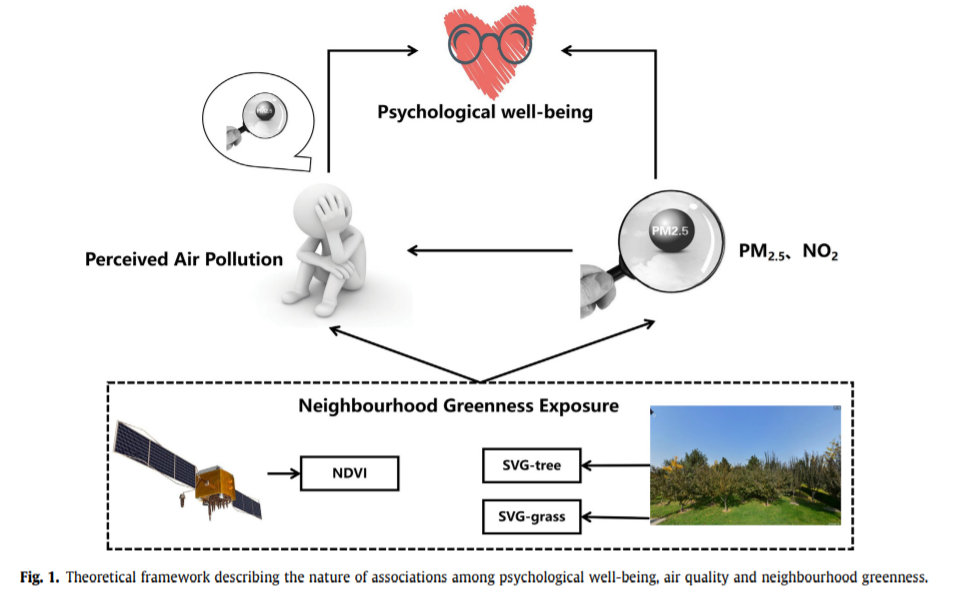Abstract
China's rapid urbanization has led to an increasing level of exposure to air pollution and a decreasing level of exposure to vegetation among urban populations. Both trends may pose threats to psychological well-being. Previous studies on the interrelationships among greenness, air pollution and psychological well-being rely on exposure measures from remote sensing data, which may fail to accurately capture how people perceive vegetation on the ground. To address this research gap, this study aimed to explore relationships among neighbourhood greenness, air pollution exposure and psychological well-being, using survey data on 1029 adults residing in 35 neighbourhoods in Guangzhou, China. We used the Normalized Difference Vegetation Index (NDVI) and streetscape greenery (SVG) to assess greenery exposure at the neighbourhood level, and we distinguished between trees (SVG-tree) and grasses (SVG-grass) when generating streetscape greenery exposure metrics. We used two objective (PM2.5 and NO2 concentrations) measures and one subjective (perceived air pollution) measure to quantify air pollution exposure. We quantified psychological well-being using the World Health Organization Well-Being Index (WHO-5). Results from multilevel structural equation models (SEM) showed that, for parallel mediation models, while the association between SVG-grass and psychological well-being was completely mediated by perceived air pollution and NO2, the relationship between SVG-tree and psychological well-being was completely mediated by ambient PM2.5, NO2 and perceived air pollution. None of three air pollution indicators mediated the association between psychological well-being and NDVI. For serial mediation models, measures of air pollution did not mediate the relationship between NDVI and psychological wellbeing. While the linkage between SVG-grass and psychological well-being scores was partially mediated by NO2-perceived air pollution, SVG-tree was partially mediated by both ambient PM2.5-perceived air pollution and NO2-perceived air pollution. Our results suggest that street trees may be more related to lower air pollution levels and better mental health than grasses are .

Q.E.D.









